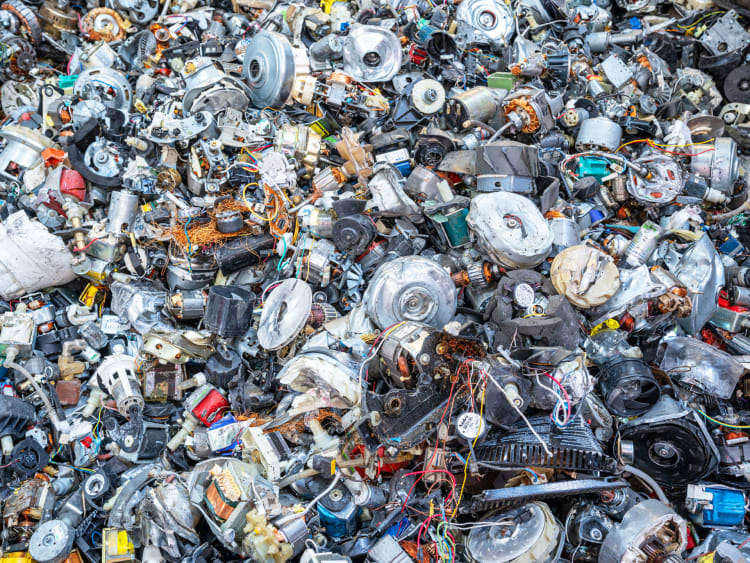Once the hazardous components have been removed, the material is crushed in several shredders so that both the remaining hazardous components, such as batteries or capacitors, and the various recyclable materials, such as iron, non-ferrous metals and plastic, can be sorted. When selecting the shredding units, consideration was given not only to the required throughput but also to the lowest possible wear and tear and easy maintenance.
The recyclable materials are sorted out after screening using state-of-the-art magnetic technology, eddy current separation and sensor sorting technology. The iron fractions are re-sorted in a sorting cabin to ensure quality and increase the degree of purity.
The fine fraction is also processed through various sorting steps to separate the plastics from the metal compounds, which are then ground to separate the various metal granules.

Great attention was devoted to fire protection at the plant. Automated fire detection and extinguishing systems were installed after the shredding units. The detected fire source is automatically discharged from the plant process into a steel bunker via a hatch system, where the personnel can extinguish the fire and secure the fire source.
The high wear and tear of the waste material processed at the new plant required specific design features such as stainless-steel wear plates to reinforce the hoppers and belts with fire retardant and cutting protection.
The plant was also designed to simplify maintenance as much as possible. All key points and motors are accessible via maintenance platforms or access ladders.
Close collaboration ensures the successful completion of a complex project
The design and assembly of the new plant presented challenges that the Stadler and Immark teams successfully resolved through close collaboration.
“In addition to the installation of the new system, the old system continued to operate. This meant that the new plant had to be built in several stages and the old plant had to be dismantled at the same time. In addition, the available space on the construction site was very limited,” says Patrick Wollenmann.
The modular design of the new plant was a key element for the successful completion of the project and for the high speed of assembly: “The modular design of the individual units has limited the assembly time to a very short period. Any problems that arose during assembly were quickly identified and solved thanks to the flexibility of Stadler's employees,” adds Patrick Wollenmann.
“This was a major electrical waste project, with many new machines being installed and many suppliers involved. We had a lot of new interfaces. All in all, we managed everything very nicely in cooperation with Immark’s team,” concludes Philipp Frechen, Stadler joint Project Manager.



